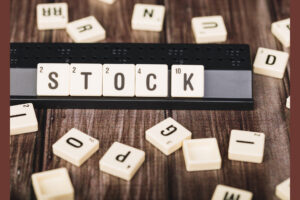Why Looking Poor Is Important: The Power of Modest Appearance
Have you ever noticed that the people who appear the wealthiest often aren’t the ones who actually hold real financial power? The flashy SUVs, the designer brands, the Dubai vacations posted on Instagram — more often, these are signs of someone trying to appear rich rather than being actually wealthy. 90% of the time it’s all just a façade and illusion, a performance meant for social validation, not a reflection of financial stability.
On the other hand, those who are quietly building wealth — the true millionaires and disciplined savers — often blend in. They drive decade-old Maruti Swifts or Hyundai i20s, wear Bata or Woodland shoes and carry mid-range phones that aren’t the latest model. And they do it on purpose.
They understand something that many people miss: appearances don’t build wealth, habits do.
When we talk about “looking poor,” we’re not suggesting that you present yourself as destitute or homeless — that might be taking it a bit too far. Instead, it’s about embracing a modest, unpretentious lifestyle that reflects financial wisdom rather than consumer excess.
In this article, we’ll explore why looking poor is important: the hidden power of a modest appearance, and how this mindset shift can lead to a life of less stress, more freedom, and greater happiness.
1. Looking Rich Keeps You Poor
The pursuit of looking rich can quietly chain you to a lifestyle you can’t actually afford. Flashy possessions — maybe it’s the latest iPhone, a new Fortuner, or branded fashion from Zara — may project an image of success, but in reality, they often do the opposite: they drain your wealth and increase your financial stress.
The more you accumulate to maintain appearances, the more your lifestyle begins to control you. In short, the things you own start to own you.
Maintaining the illusion of wealth is expensive. Many fall into the trap of saying, “I work hard, I deserve this,” as they splurge on luxuries that offer only temporary satisfaction. But the financial consequences are real. A recent survey showed that 75% of urban Indians struggle to handle an unexpected ₹50,000 emergency expense, and nearly two-thirds of salaried professionals live month-to-month with EMIs eating away at their income. What’s more alarming is that this includes households earning ₹20–30 lakh annually — high incomes, but still trapped in consumerism and financial insecurity.
So how are people affording all these luxury items? The truth is, they aren’t. Many rely on credit cards, personal loans, and EMIs to maintain the image. And while they may be winning the social media game, they’re losing the wealth-building one.
Now, imagine a different path. Let’s say you receive a ₹5,00,000 annual bonus. If your instinct is to spend it on a foreign trip or the latest iPhone Pro Max, that money is gone. But if you invested that same ₹5,00,000 into a Nifty 50 index fund, which has historically returned about 12% annually, it could grow into nearly ₹50 lakh in 20 years — without you adding another rupee.
That’s the power of compounding. And it’s also the cost of choosing to look rich today instead of becoming wealthy tomorrow.
When you’re okay with looking modest or even “poor” by society’s standards, you reclaim financial control. You gain peace of mind, stability, and the freedom to live life on your own terms.
2. True Wealth Whispers
One of the greatest ironies of modern life is this: you don’t need to look rich to be rich. In fact, the people who possess true wealth rarely feel the need to prove it.
Because we can’t see someone’s investment account or mutual fund portfolio, we often mistake flash for fortune.
But genuine wealth doesn’t scream — it whispers. Take Radhakishan Damani (founder of D-Mart), one of India’s wealthiest billionaires. Despite his massive fortune, he’s known for living a simple, frugal lifestyle — white shirts, simple trousers, no show-off cars, no flashy possessions. His philosophy is simple: possessions don’t define wealth; financial freedom does.
True wealth shows up in quiet confidence, not in conspicuous consumption. It’s never about impressing others, rather building a life of freedom, security, and long-term value.
3. Looking Rich Is Just Renting Status
Here’s a hard truth: looking rich is just renting status. And like any rental, it comes with recurring costs.
Many of us fall into the trap of using material things to prove our worth: “Look at me! I have the latest iPhone, the luxury SUV, the Louis Vuitton bag — would a failure own these?” But this is a mindset driven by insecurity, not wealth.
This craving for social approval is ancient, but the strategies we use today are costly. The shiny new car feels old in a year. The ₹1 lakh iPhone becomes outdated within 12 months. The Maldives vacation pictures that wowed people on Instagram? You can’t keep reposting them forever.
This is the Hedonic Treadmill — the more you acquire to feel good, the more you need just to maintain that feeling.
And in India, with EMI culture booming, this trap is deeper than ever. Every EMI you add is not just a monthly payment; it’s a piece of your freedom sold off.
4. Looking Poor Gets You There Faster
It might sound counterintuitive, but looking poor can actually get you to your goals faster — whether those goals are financial freedom, starting your own business, more time with family, or even retiring early.
In his book The Psychology of Money, Morgan Housel writes that “the highest form of wealth is the ability to wake up every morning and say, ‘I can do whatever I want today.’”
But if you’re tied to EMIs, lifestyle inflation, and the need to look wealthy, that kind of freedom feels impossible.
Personally, the money I’ve saved by not chasing appearances has given me the flexibility to take risks — like starting my own blog and working on projects I enjoy. It may not make crores, but it gives me time, energy, and peace — things far more valuable than “status.”
5. Looking Rich Attracts the Wrong People
Looking rich might get you noticed — but often by the wrong crowd: opportunists, relatives with sudden “needs,” and people more interested in what you have than who you are.
Life must have shown us countless examples of this — the “friends” who vanish the moment money disappears. When you appear wealthy, you attract requests for loans, unfair expectations, and sometimes even scams.
But when you choose modesty, you filter out noise. You attract people who value your character, not your possessions.
6. Looking Poor Makes Your Life Simple
Confucius once said, “Life is really simple, but we insist on making it complicated.” The same is true of money.
Life becomes simpler when you stop trying to impress. A roof over your head, good food, health, and people you love — that’s all you really need.
We see the Diderot Effect everywhere. One family upgrades to a bigger house, and suddenly the old furniture looks shabby, so they buy new furniture, décor, appliances, and EMI after EMI piles up. One branded kurta or saree makes the rest of the wardrobe feel outdated, so more spending follows.
Every purchase has hidden costs — a luxury car means high maintenance, insurance, and fear of scratches. A bigger house means higher bills, longer cleaning hours, and heavier property tax.
Personally, I’ve found peace in simplicity. My phone is a 5-year-old mid-range model that still works fine. My clothes are mostly unbranded. I use public transport or ride a motorcycle. The things I own serve me — I don’t serve them.
My goal isn’t to impress; it’s to have the freedom to live life on my terms. To have enough money in the bank so I never have to do anything I don’t want to.
That kind of freedom? It starts with living simply. Appreciating what you have. Choosing intention over image.
That’s the hidden power of looking modest — less stress, more freedom, and ultimately, a richer life.
FAQ: Why Looking Poor Is Important
1. Does “looking poor” mean I shouldn’t spend on myself at all?
Not at all. “Looking poor” doesn’t mean depriving yourself. It means spending mindfully — choosing long-term financial stability over short-term status symbols. Buying quality items that last (like a good pair of shoes or a reliable car) is different from chasing flashy trends for validation.
2. Is it wrong to buy branded clothes, cars, or gadgets?
No, the problem arises when you buy them to signal wealth or keep up with others, instead of aligning purchases with your needs and financial goals. If you can afford a luxury without debt and without compromising investments or savings, it’s fine. But if it eats into your emergency fund or retirement planning, it’s a trap.
3. Why do so many high-income Indians still live paycheck-to-paycheck?
Because lifestyle inflation and EMIs consume their income. Higher salaries often come with higher spending habits — bigger houses, luxury cars, international vacations. Instead of building assets, people accumulate liabilities, leaving them financially vulnerable despite earning well.
4. How can modest living help me achieve financial freedom faster?
By keeping expenses low, you free up more money for investments. For example, if you save and invest ₹25,000/month in mutual funds, at 12% average returns, you could accumulate over ₹3 crore in 20 years. The earlier you embrace modesty, the faster compounding works in your favour.
5. Doesn’t looking rich help in business or networking in India?
It depends. In some industries, appearances can create an impression, but long-term trust and results matter more. Many of India’s wealthiest entrepreneurs (like Radhakishan Damani or Azim Premji) are known for simplicity. Modesty often builds credibility and respect, while flashy spending can sometimes attract opportunists instead of genuine partners.
6. What if my family pressures me to “look rich” at weddings or social events?
This is common in India due to social expectations. The best way is to balance tradition with practicality — participate, but set boundaries. Instead of competing with relatives, focus on meaningful celebrations within your budget. Remember: real respect comes from character, not gold jewellery or flashy cars.
7. How do I avoid the EMI trap?
- Buy things only if you can pay in full without loans.
- Avoid upgrading gadgets, cars, or homes just for status.
- Keep total EMIs below 30–35% of your monthly income.
- Focus on building assets (mutual funds, stocks, PPF, FD, real estate for rental) instead of liabilities.
8. Is “looking poor” the same as being stingy or miserly?
No. A miser avoids spending even when necessary. Looking modest is about spending wisely — on needs, experiences, and investments — while avoiding wasteful status-driven purchases. It’s financial discipline, not miserliness.
9. How do I start practicing modest living?
- Use your current phone until it stops working.
- Buy reliable mid-range cars instead of luxury SUVs.
- Prefer local and quality clothing brands over show-off labels.
- Invest bonuses or increments instead of splurging them.
- Say no to unnecessary social pressure purchases.
10. What’s the ultimate benefit of looking poor?
Peace of mind, financial independence, and the freedom to live life on your own terms. Looking rich may earn likes and attention, but looking modest helps you build real wealth and real happiness.













Post Comment